 Stinging nettles (Urtica dioica) are a common weed with a bad reputation–the plant has tiny spines that inject, as Wikipedia puts it, a “cocktail of poisons.” Miraculously when you boil the plant the spines lose their punch and you’re left with a tasty green consumed plain or incorporated in a number of dishes, from soups to ravioli, to the German cheese pictured above (thanks to Berlin corespondent Steve Rowell for the photo). When dried, the leaves make a damn good tea, with a rich, indescribable flavor. If that ain’t enough, nettles pack a powerhouse of vitamins, minerals, and are perhaps the vegetable with the highest protein content (10%).
Stinging nettles (Urtica dioica) are a common weed with a bad reputation–the plant has tiny spines that inject, as Wikipedia puts it, a “cocktail of poisons.” Miraculously when you boil the plant the spines lose their punch and you’re left with a tasty green consumed plain or incorporated in a number of dishes, from soups to ravioli, to the German cheese pictured above (thanks to Berlin corespondent Steve Rowell for the photo). When dried, the leaves make a damn good tea, with a rich, indescribable flavor. If that ain’t enough, nettles pack a powerhouse of vitamins, minerals, and are perhaps the vegetable with the highest protein content (10%).
At the risk of contradicting yesterday’s anti-media screed (After all, Marshall McLuhan once said, “If you don’t like that idea I’ve got others.”), we’ll end with some links to an obscure sub-genre of youtube videos, nettle torture stunts. Mrs. Homegrown could drone on about the psycho-sexual implications of these clips, but that would be fodder for another blog. In the meantime, thanks again to Steve Rowell, here’s some nettling to fill your evening hours: here, here and here (just three of what may be hundreds).

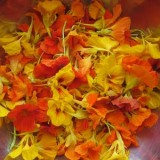
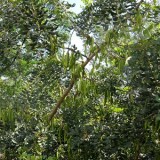
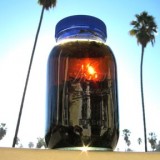
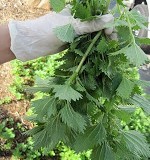
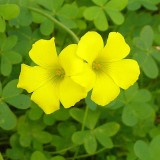

Do you know if nettle grows in Houston? I’ve tried finding it in the field, but either I’m lousy at finding plants, or it doesn’t grow nearby. I recall some stinging weeds around this area when I was young, but maybe there’s more than one kind of stinging weed.
Shreela,
Yes, I’m guessing that there must be nettles in Houston. The plant can be found all over the U.S., Canada, and northern Mexico. That being said, I didn’t see any on my visit, but it’s not one of the plants I’m good at recognizing. Mrs. Homegrown is better at the nettle spotting. It’s also mentioned, by the way, in a good guidebook by Delena tull, Edible and Useful Plants of Texas and the Southwest.
Thanks! Google Books had the first 38 pages, so I’ll be keeping an eye open for it.
I enjoyed cheese with nettles when we lived in Belgium. I believe it was oud geitenkaas, aged goatcheese. Whatever it was, it was delicious.
Funny to find this article today. Just yesterday I was looking for a list of weeds that chickens enjoy. I recently started with a tiny flock of four laying hens, and I’d like to feed them as much free greenery as possible. Most of what I could find online I already knew: dandelion, stinging nettles, and comfrey. I did learn that spiderwort/wandering jew/tradescantia appeals to chickens, but I haven’t seen that in my area. If you know of resources for weeds to feed chickens, or if you know of any yourself, I’d love to hear about it.
I’ve found that my hens love this plant, though I don’t know what it’s called:
http://farm3.static.flickr.com/2276/2522792294_85f35d2f0e_m.jpg
One person thought it was wild lettuce. Leaves look a lot like dandelion, but it’s not dandelion. Any ideas?
Our chickens really like sorrel which grows in our garden like a weed. It’s high in oxalic acid, so you don’t want them to just eat sorrel–it has to be balanced with other things. The chickens also like to eat grape leaves from our huge native vine (Vitus californica), as well as the weeds you mentioned.
That plant looks like prickly lettuce (Lactuca serriola). Take a look here for more info:
http://www.ppws.vt.edu/scott/weed_id/lacse.htm
Somewhere I have a video clip wherein Ray Mears shows how to strip the leaves off a nettle stalk without getting stung, and then using the stalk to make extremely strong cordage. I’m sure it could be processed and woven as well for a fantastic textile.
Stir-fried nettles are quite delicious.